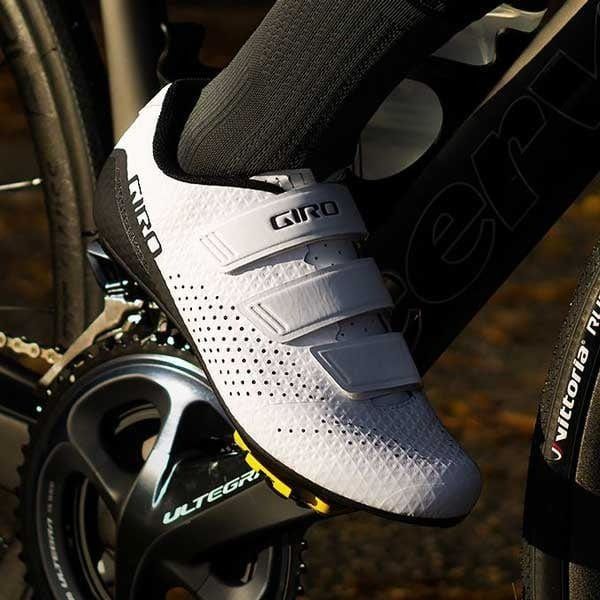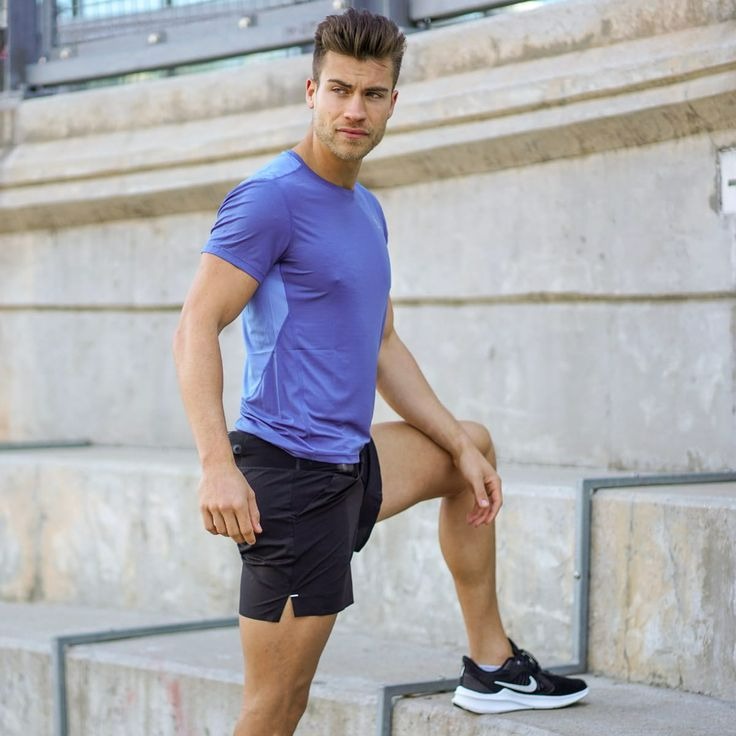Introduction to Cycling for Fitness
Cycling stands out as a top choice for anyone aiming to get fit. It merges the joy of exploring outdoors with the benefits of a full-body workout. Cycling sparks your heart rate, tones muscles, and burns calories effectively.
Why Choose Cycling?
Choosing cycling for fitness comes with ease and flexibility. You can start at any fitness level and adjust the intensity as you improve. It’s low-impact, meaning it’s kind on your joints compared to high-impact sports.
Getting Started with Cycling
To begin, all you need is a bike that fits you well and a safe place to ride. Start with short, gentle rides to build your stamina. Over time, you can increase the distance and difficulty. Remember, consistency is key for cycling success.
Necessary Gear and Equipment
Invest in a good helmet for safety. Also, consider comfortable cycling clothes and a water bottle to stay hydrated. These essentials enhance your overall cycling experience.
Cycling invites people of all ages and skill levels to improve their health. It’s an efficient way to work on weight loss while discovering the joy of riding. By cycling regularly, you contribute to a healthier lifestyle and a trimmer physique. Stay persistent and watch your fitness level soar with each ride.

Benefits of Cycling for Weight Loss
Is cycling good for weight loss? Cycling proves effective for shedding pounds and it comes with several benefits. Here are the core advantages that make cycling an excellent choice for weight loss.
Burns Calories
Cycling burns calories at a significant rate, which is crucial for weight loss. The exact number depends on intensity and duration, but a moderate ride can burn hundreds of calories.
Boosts Metabolism
Regular cycling increases your metabolic rate. This helps your body burn more calories, even when you’re not riding.
Builds Muscle
Riding a bike works out various muscle groups. As you gain muscle, your body burns more calories at rest.
Low-Impact Exercise
Because it’s low-impact, cycling suits those with joint issues. It allows for a vigorous workout with reduced risk of injury, compared to high-impact exercise.
Promotes Mental Well-being
Cycling also enhances mental health. A healthy mind supports consistent exercise habits and better food choices.
Can Be Done Anywhere
Whether you choose to ride indoors or in the great outdoors, cycling fits into various lifestyles and environments, making it accessible for sustained weight loss efforts.
Offers Variety
With cycling, you can mix up your routes or workout programs, which helps prevent boredom and keeps you motivated.
By combining these benefits, you understand why cycling is good for weight loss and, more importantly, why it stands as a sustainable and enjoyable means to a healthier life.
Structuring a Cycling Workout Plan
Creating an effective cycling workout plan is key for weight loss success. Start by setting clear goals. How much weight do you aim to lose? What is your timeline? Having these targets in place helps to tailor a workout plan that meets your needs.
Define Your Cycling Schedule
Decide on the number of days you will cycle each week. Stick to a schedule. This builds a routine and keeps you on track. Beginners should start slow, perhaps cycling twice or three times a week. More experienced cyclists can handle more frequent rides.
Integrate Various Cycling Styles
Include different types of cycling in your plan. Try interval training to boost calorie burn. On other days, go for longer, steadier rides to build endurance. This variety also prevents boredom and keeps workouts engaging.
Gradually Increase Intensity
Over time, increase your ride’s intensity to continue weight loss. Add more hills or higher resistance if you’re indoors. These changes challenge your muscles and improve fitness levels.
Plan Rest Days
Rest days are crucial. They allow your muscles to recover and prevent burnout. Include at least one or two rest days each week in your cycling plan.
Stay Consistent
Consistency is vital. Keep up with your plan and make adjustments as needed. If you miss a day, don’t get discouraged. Get back on track with your next scheduled ride.
A structured cycling workout plan boosts your chances of losing weight. It guides you to focus and make the most of each cycling session. Combine this plan with a healthy diet for even better weight loss results. Stick to the plan, and you’ll likely see progress over time.

Nutrition and Diet for Cyclists
Proper nutrition is crucial for cyclists looking to lose weight. Here’s how to optimize your diet.
Balance Macronutrients
Ensure your meals have a good balance of carbs, proteins, and fats. Carbs fuel your rides, while protein repairs muscles. Healthy fats are essential for overall wellness.
Hydrate Well
Drink water before, during, and after cycling. Staying hydrated boosts performance and aids in recovery.
Time Your Meals
Eat a meal two to three hours before riding. Choose snacks like bananas or energy bars if you’re close to workout time.
Manage Portions
Eat smaller, more frequent meals to control hunger and supply steady energy.
Focus on Whole Foods
Incorporate fruits, vegetables, lean proteins, and whole grains. Cut down on processed foods.
Consider Cycling Supplements
Supplements like electrolytes can aid during long rides. Always consult with a nutritionist before starting any supplement regime.
By paying attention to your diet, you fuel your weight-loss journey effectively. Combine these tips with regular cycling for optimal results.
Indoor vs. Outdoor Cycling
When considering if cycling is good for weight loss, think about where you prefer to ride. Each location has its own pros and cons for weight loss efforts.
Benefits of Indoor Cycling
Indoor cycling, often done on a stationary bike, provides control over your workout environment. You can cycle at any time, regardless of weather conditions. It offers a consistent resistance level, which can aid in weight loss. Moreover, indoor cycling classes can boost motivation through group energy and music.
Advantages of Outdoor Cycling
Outdoor cycling gives you fresh air and varied scenery. It can be more engaging and less monotonous. You encounter different terrains and resistances, such as hills, which can enhance calorie burning. Outdoor rides can also be more challenging, helping to increase fitness levels faster.
Weighing the Options for Weight Loss
Both indoor and outdoor cycling contribute to weight loss. Indoor cycling allows for precise tracking of effort and consistent workouts. On the other hand, outdoor cycling provides natural resistance and the potential for longer rides. Consider what keeps you motivated and what fits into your lifestyle to decide the best option for you.
Choosing between indoor and outdoor cycling depends on personal preference, goals, and lifestyle. Mix both to keep your workout fresh and tackle weight loss from different angles.

Tracking Your Progress
Monitoring your progress is essential when cycling for weight loss. It helps keep you motivated and on course. Here are strategies for tracking your gains efficiently.
Set Realistic Milestones
Begin with attainable goals. Examples include riding a certain distance or losing a specific weight. Celebrate these milestones as you reach them.
Keep a Cycling Journal
Record each ride’s details. Note the distance, time, and how you felt. This log shows your improvements over time.
Use Fitness Apps
Many apps track cycling performance. They record speed, route, and calories burned. These tools are useful for monitoring your progress.
Track Your Body Measurements
Measure your body regularly. Use a tape to measure waist, hips, and other areas. Comparing these over time will show physical changes.
Pay Attention to Your Clothes
Notice how your clothes fit. Looser outfits can indicate weight loss, even when scales don’t reflect it.
Have Regular Weigh-ins
Weigh yourself at the same time each week. Consistent timing gives more accurate readings.
Be Patient and Adjust
Weight loss takes time. If progress stalls, reassess your cycling plan and diet. Adjust as needed to continue your journey.
Tracking provides motivation and insight into your weight loss efforts. Use these methods to see how cycling is good for weight loss, and adjust your approach when necessary.
Overcoming Plateaus in Weight Loss
When working towards weight loss with cycling, you might hit a plateau. This happens when you no longer see progress despite sticking to your routine. It’s a common part of the weight loss journey that can be frustrating. But with the right strategies, you can push past it.
Understand the Plateau
A plateau often occurs because your body gets used to your workout and diet routine. Over time, what once was a challenge is no longer as effective. Your body becomes more efficient at conserving energy. As a result, the weight loss that was once evident may slow down or stop.
Change Your Workout Intensity
To break through a plateau, try shaking up your cycling routine. Add more intensity to your rides or try new cycling paths with various slopes and terrains. This change challenges your body in new ways, reigniting weight loss.
Review Your Diet
Sometimes, a plateau can sneak in due to dietary habits. Are you eating more calories than you need? Review your portions and food choices. Adjust them to ensure you’re in a calorie deficit.
Mix Up Your Routine
Besides changing the intensity, add different exercises to your routine. Include strength training or other cardio workouts. This variation can jumpstart your metabolism and weight loss.
Take Adequate Rest
Don’t overlook the importance of rest. Over-exercising can lead to fatigue and a plateau. Ensure you’re getting enough sleep and recovery time. A well-rested body performs better and can break through weight loss stalls.
Stay Hydrated
Proper hydration is key for optimal performance. Sometimes, not drinking enough water can hinder weight loss. Make sure you’re drinking enough fluids throughout the day.
Overcoming a plateau is all about making smart adjustments. By fine-tuning your cycling routine and diet, you can get back on track to achieving your weight loss goals. Stay patient and persistent. Remember, every rider faces challenges, but it’s overcoming them that leads to success.
Safety Tips and Best Practices for Cycling
Utilizing proper safety measures and adhering to best practices can significantly enhance the effectiveness of cycling for weight loss while minimizing the risk of injury. Here are crucial tips to keep in mind.
Wear Protective Gear
Always wear a helmet to protect your head. Choose one that fits correctly and is approved for biking. Wearing gloves can also cushion your hands and provide better grip.
Check Your Bike Before Each Ride
Inspect your bicycle before you set off. Make sure brakes work and tires are inflated. Check that the chain is lubricated and the lights are functioning if riding at night.
Follow Traffic Rules
Obey all traffic signs and signals. Use hand signals to show your intentions to other road users. Ride in the direction of traffic and stay as far to the right as possible.
Be Visible
Wear bright clothing, especially if riding early in the morning or at dusk. Reflective gear and lights help others see you. This is vital for safety.
Plan Your Route
Choose roads with less traffic and good infrastructure for cyclists. Avoid areas with poor lighting or high crime rates. If unsure, plan your route using cycling apps.
Stay Alert
Keep your senses sharp. Listen for cars, and don’t wear headphones that can drown out important sounds. Watch out for obstacles or hazardous road conditions.
Learn Cycling Techniques
Understand how to use gears effectively for different terrains. Practice riding in a straight line and looking over your shoulder without swerving. These skills improve control over the bike.
Hydrate and Fuel Properly
Remember to carry water and some form of quick energy, like a banana or granola bar. Staying fueled is crucial for maintaining energy levels during your ride.
Stick to Your Fitness Level
Don’t push yourself too hard, too fast. Increase your distance and speed gradually. This prevents overexertion and potential injuries.
By following these safety tips and best practices, you ensure that your cycling journey is not only effective for weight loss but also enjoyable and safe.

